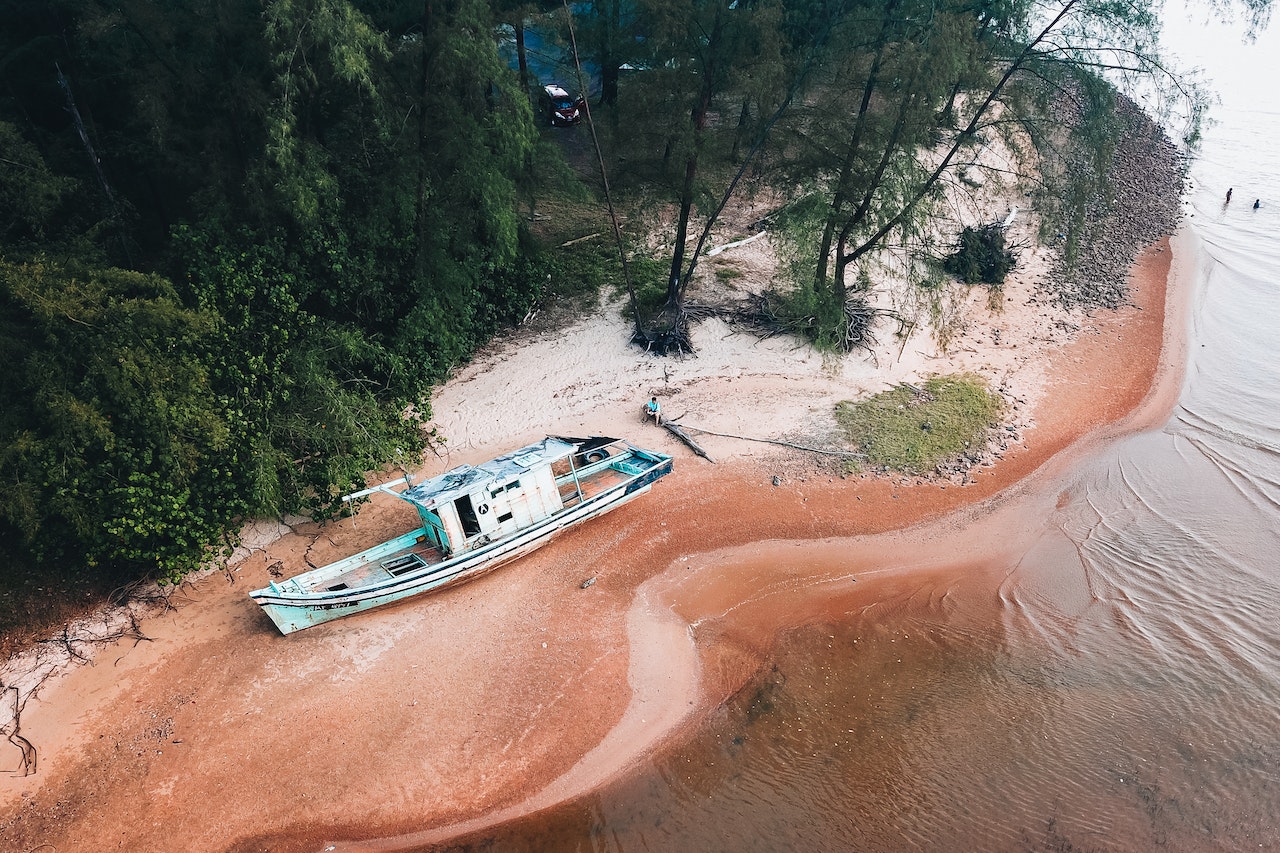What to Do If Your Boat Runs Aground
Beware of Undersea Hazards!
Imagine a serene coastline dotted with sailboats gracefully gliding over the shimmering waves. However, the tranquility is suddenly disrupted when your boat hits a shoal or some other undersea hazard, with its hull becoming firmly lodged in the object.
Running aground serves as a humbling reminder of the delicate balance between humans and nature. Despite advancements in technology and navigational aids, boats of all sizes still find themselves stranded on submerged shoals, hidden sandbars, or treacherous reefs.
Misjudgment of depth, obscured navigational markers, unpredictable currents, or unforeseen shifts in underwater topography are just some of the reasons why boats run aground.
8 Steps to Take When Your Boat Gets Stuck
Knowing what to do when your boat runs aground requires swift action, level-headed decision-making, and using the resources at hand. The good news is that you can devise a plan to dislodge your vessel or seek assistance before the situation worsens.
Kids Car Donations is here to help you face adversity head-on and emerge with you and your boat intact. Here are the steps you need to take when your boat runs aground:
- Step 1: Assess the situation.
Once you realize your boat has run aground, you must remain calm and promptly assess the situation. Take a moment to determine the extent of the grounding and evaluate any immediate dangers. Check for signs of hull or propeller damage and ensure the safety of all passengers on board.
- Step 2: Determine the depth and tide.
Next, determine the depth of the water around your boat. Use a depth sounder or a boathook to measure the water depth in various directions. The information you get will help you understand the severity of the grounding and whether the tide is rising or falling. Knowing the tide’s behavior is extremely important for planning your next steps.
- Step 3: Shift the weight.
If your boat is grounded but not severely stuck, shifting the weight may help free it. Ask passengers to move to the opposite side of the boat or redistribute heavy equipment to alter the vessel’s balance. This adjustment may help restore the buoyancy of your boat and dislodge it.
- Step 4: Back off slowly.
If your boat is lightly grounded, you can attempt to reverse the obstruction. Begin by reversing the engine at a low RPM and gradually increasing the throttle. Be cautious not to damage the propellers or strain the engine. Use the passengers’ shifting weight or the assistance of a dinghy or small vessel to gently rock the boat, aiding its backward movement.
- Step 5: Heel the boat.
If your boat is stuck on a soft bottom or shoal, heeling the boat might assist in freeing it. Reduce the weight on the grounded side by moving passengers or equipment to the opposite side. Use wind or current to push against the grounded side of the boat while keeping the engine at neutral or using minimal power. By combining reduced weight and external forces, you may tilt the boat and lift it off the obstruction.
- Step 6: Wait for the tide.
Sometimes patience is the key when dealing with a grounding. If you can’t free the boat immediately or the tide is low, waiting for the rising tide might be the best course of action. As the water level increases, it can lift the boat off the grounding and allow you to maneuver it back into deeper water. Use this time to secure the boat, ensure the safety of everyone on board, and monitor any changes in the situation.
- Step 7: Seek assistance.
If your attempts to free the boat are unsuccessful or the grounding is severe, it’s important to seek assistance. Contact the nearest Coast Guard, marine rescue service, or local authorities to inform them of your situation. They can provide guidance, coordinate a rescue operation, or connect you with professional salvage services.
- Step 8: Document and report the incident.
After the boat is safely freed or assistance arrives, it’s crucial to document the incident and report it to the appropriate authorities. Take photographs of any damage to the vessel, record the date, time, and location of the grounding, and provide a detailed account of the events leading up to the incident. This information may be required for insurance purposes or future navigational safety.
Looking to Dispose of an Old Boat?
If you’re looking for a hassle-free way to dispose of your unwanted boat while making a difference in your community, look no further than Kids Car Donations. When you donate that boat to us, we’ll sell it through an auction and turn over the proceeds to our IRS-certified 501(c)(3) charity partners.
These nonprofits use the funds to provide comprehensive healthcare services to disadvantaged children and teens facing serious medical conditions. The services include treatments for various pediatric health challenges, emotional support, and relief from pain and trauma.
In return, we’ll provide you with our free pickup and towing service anywhere in the country. We’ll also promptly send you by mail the 100% tax-deductible sales receipt of your boat following its auction. The receipt will entitle you to claim the maximum tax deduction in the next tax-filing season.
However, the greatest reward lies in the immeasurable joy you’ll experience from making a charitable contribution that improves the health and well-being of children coping with various afflictions.
At Kids Car Donations, we don’t limit ourselves to boats. We also accept various types of motor vehicles, including those that are no longer in good condition.
To learn more about our vehicle donation program, including our quick and convenient donation process, head over to our FAQs page. If you have any questions or concerns, our 24/7 toll-free hotline at 866-634-8395 is available for your convenience. Alternatively, you can write to us here.

Be a Hero to the Hurting Children in Your Area Today!
No matter the condition of your boat, you can give it a new and noble purpose by transforming it into a source of hope for kids requiring urgent medical care. All you need to do is donate that vessel to Kids Car Donations. Call us at 866-634-8395 or fill out our secure online donation form now!


